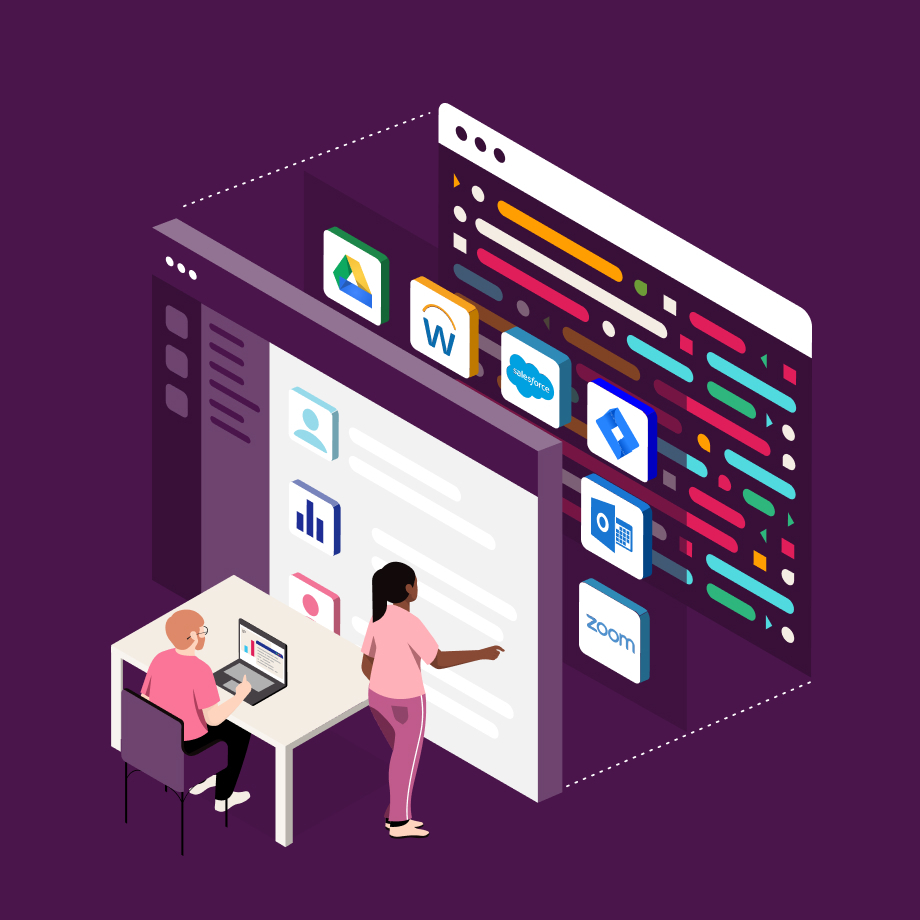
By Rukmini Reddy and Scott Nyberg
In our “Engineering Energizers” Q&A series, we examine the professional journeys that have shaped Salesforce Engineering leaders. Meet Rukmini Reddy, Senior Vice President of Software Engineering for the Slack platform. Her team’s goal is to empower developers, enhance productivity, and push the envelope of AI and automation innovation at Slack.
Read on to explore how Rukmini and her team overcome tough technical challenges to deliver seamless experiences for our customers.
What is your team’s mission?
My team’s mission is to make automation accessible for everyone. We spearhead Slack’s first-party developer experience, which allows enterprise developers to build applications and integrations on our platform just for their own teams and workspaces. We also assist a thriving third-party developer ecosystem, which allows Slack partners to build and publish apps on our App Directory for anyone to install. We currently have more than 2,600 partner apps in our directory from partners like PagerDuty, Atlassian, and more.
Another product we support is Workflow Builder, a groundbreaking no-code automation tool that enables Slack users of any technical level to significantly streamline their tasks. By creating customized workflows, users can automate routine functions — radically increasing their productivity.
Rukmini dives deeper into her team’s mission.
You joined Slack a few years ago to re-architect the platform. What key challenge inspired the redesign and how has your team helped?
Prior to the re-architecture, apps on the Slack platform were time-consuming to build, and functionality was locked away in monolithic code that was difficult to repurpose and challenging to update and maintain over time. Our developer community told us they wanted more.
To solve this challenge, our transformative re-architecture made Slack’s platform modular and composable, enabling apps to be broken down by functions, which provides a lot more flexibility and enables developers to define a unit of programming logic that solves their specific business problems. Now, developers can create functions that serve as modular building blocks, chain those functions together to create complex functionality, and most importantly, share those building blocks with others to remix and reuse in their own automated workflows.
Also prior to the re-architecture, enterprise developers worried about where they would host their code and navigating long admin approval processes. With the new platform, they can host their code directly in Slack for a more seamless experience and to eliminate infrastructure overhead. Hosting code in Slack also ensures apps are secure and compliant by design, so developers can focus more on what they do best (creating apps!) while being assured that what they built aligns with their organization’s security standards.

What are some recent innovations in AI and automation that your team has brought to Slack?
We are approaching generative AI in Slack in two ways to take intelligent productivity to the next level. First, we recently announced Slack AI, which brings generative AI natively into the user experience. Those capabilities include:
- Channel recaps: By receiving real-time highlights from any channel, users save considerable time writing status reports or deciphering central themes from feedback channels
- Thread summaries: One-click summaries enable users to easily catch up on lengthy team discussions ranging from brainstorming sessions to strategy planning
- Search answers: By asking search questions in natural language, the platform provides search results including relevant messages, files, and channels, as well as AI-generated summaries
Slack AI runs on Slack’s trusted infrastructure, which ensures security and compliance. With Slack AI, no data leaves Slack, there is no third-party model training, and no data cross-contamination.
Our second approach to generative AI is via our APIs and open platform ecosystem, which provides the flexibility to integrate with any combination of AI partners. That includes partner-built apps in our app directory like the Claude app built by Anthropic, and custom AI apps built by Slack customers.
And Slack’s new and improved Workflow Builder introduces exciting automation features such as no-code automation, which empowers engineers of all experience levels to automate without code and features connectors from external sources and Salesforce Flow. Additionally, users can leverage a dedicated automation hub within Workflow Builder, enabling them to easily access automation in one central location that also provides templates, recent workflows, and team-wide workflows. Users can also reuse automations from other teams seamlessly.
Rukmini explains why engineers should join Slack.
What technical risks does your team encounter while creating solutions for customers?
Managing technical risks remains a common challenge for my team. One risk relates to iterative development, where our first attempt may not seamlessly deliver a quick solution. To overcome this challenge, our leaders must know how and when to pivot, seek feedback in the project’s early stages, and build incrementally.
We also employ a feedback-centric methodology, where we may rapidly deploy a prototype version — even if it’s not perfectly polished — to gather early customer feedback. This enables us to leverage our learnings from customer input and swiftly create the next version.
Alternatively, we may return to the drawing board and possibly re-architect a solution that was already provided to customers. While risky, this may play a key role in successfully transitioning from the prototype stage to production-ready scalability.
Can you give an example of this in practice?
For example, we recently faced the risk of not rapidly rebuilding a product’s information architecture due to time-to-market considerations. While we knew its setup may not be the most efficient, we were able to gather quick customer feedback and successfully re-architect our solution in just two months.
We are able to navigate these kinds of risks via constant communication, understanding when we can take chances, and embracing the fact that the decisions we make today may not always be permanent.
Learn more
- Hungry for more Slack stories? Read this blog to learn about Slack’s new external authentication feature!
- Stay connected — join our Talent Community!
- Check out our Technology and Product teams to learn how you can get involved.






